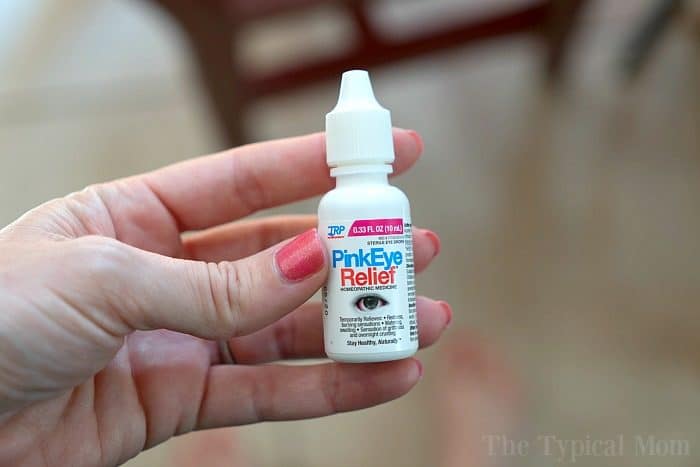


How is conjunctivitis treated in a child? In some cases, a sample of the fluid leaking from the eye may be tested to help confirm the cause of the infection. He or she will give your child a physical exam. He or she may also ask about your family’s health history. How is conjunctivitis diagnosed in a child?The healthcare provider will ask about your child’s symptoms and health history. Make sure your child sees his or her healthcare provider for a diagnosis. The symptoms of conjunctivitis can be like other health conditions.


Lesion on eyelids with a crusty appearance, most often from a herpes infection.Ear infection, most often from a bacterial infection.Thick, green drainage, most often from a bacterial infection.Stringy discharge from the eyes, most often from allergies.Sneezing and runny nose, most often from allergies.Clear, thin fluid leaking from the eyes, most often from a virus or allergies.Eyelids that are stuck together in the morning.Mild pain when the child looks at a light.Symptoms can occur a bit differently in each child. What are the symptoms of conjunctivitis in a child? Which children are at risk for conjunctivitis?Ī child who has had contact with any of the below are at risk for the condition: There are many different causes of conjunctivitis. Fluid from the eye is still contagious for 24 to 48 hours after starting treatment. The infection can also spread to other people. If the condition is caused by an infection, it’s important to know that the infection can spread from one eye to the other by touching the affected eye or fluid from the eye. The most common causes of childhood conjunctivitis are: Large outbreaks of conjunctivitis are often seen in daycare settings or schools. Treatment often will include antibiotic drops or ointments to the eye, warm compresses to the eye, and correct hygiene when touching the infected eyes.Ĭhildhood conjunctivitis is a swelling of the conjunctiva and may also include an infection. Treatment depends on the type of bacteria that have caused the infection. The eyes may be red and swollen with some drainage. Infection from other bacteria. After the first week of life, other bacteria may be the cause of conjunctivitis in a newborn.Treatment often includes antibiotics taken by mouth (oral). Symptoms usually start 5 to 14 days after birth. The symptoms include red eyes, swollen eyelids, and fluid leaking from the eyelids. It is caused by an infection with Chlamydia trachomatis. Inclusion conjunctivitis. This is the most common type of bacterial infection.Symptoms usually start about 2 to 5 days after birth. The condition causes eyes that are very red, with swelling and thick fluid leaking from the eyelids. This severe type of conjunctivitis may be prevented with the use of eye drops in newborns at birth. A newborn baby can pick up this type of bacteria during vaginal birth from an infected mother. Gonococcal conjunctivitis. This is caused by bacteria called N.This type of conjunctivitis often doesn’t need treatment. The eyes are often red and inflamed, starting a few hours after the drops have been put in the eye. Chemical conjunctivitis. This is a rare condition caused by irritation from eye drops that are given to newborn babies to help prevent a bacterial infection.There are different causes and treatments for each group. In children, the condition is often grouped into either newborn conjunctivitis or childhood conjunctivitis. Conjunctivitis is also known as “pink eye” because the eye looks pink or red. The conjunctiva is the membrane that lines the inside of the eyelids and covers the eyeball. Conjunctivitis in Children What is conjunctivitis in children?Ĭonjunctivitis is an inflammation of the conjunctiva of the eye.


 0 kommentar(er)
0 kommentar(er)
